Description: This perennial plant is 3-6' tall, branching sparingly. The stems are terete and glabrous. The alternate leaves are up to 6" long and 4" across (excluding the petioles); they are usually divided into 3-5 pointed lobes and their margins are serrate-crenate. Leaves with 3 lobes resemble a medieval halberd because the middle lobe is much longer than the 2 lateral lobes. Leaves with 5 lobes have the shape of a maple leaf. Some of the leaves may be unlobed; they are lanceolate to ovate in shape. The leaves are glabrous and their venation is partially palmate. The petioles are long and slender. The upper stems terminate in either a solitary or small cluster of flowers.
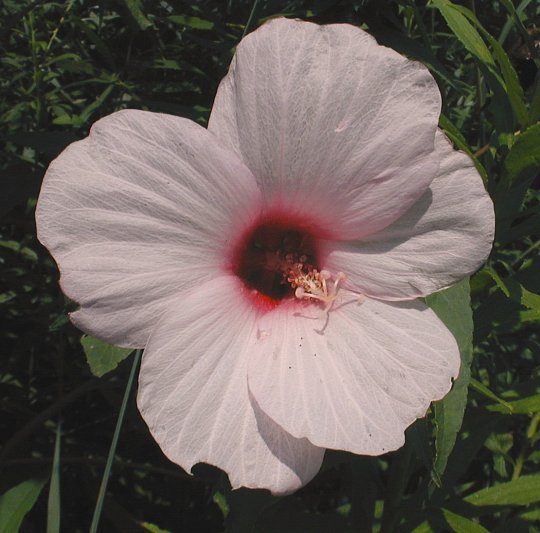
Each flower is up to 5" across when fully open, consisting of 5 rounded petals, a columnar reproductive structure, and a green calyx with 5 oval lobes. The petals are pink to nearly white. The reproductive column consists of whorled stamens and a divided style at its tip. The throat of the flower is reddish purple. Around the base of the calyx, there are several linear bracts. The blooming period occurs from mid- to late summer, lasting about 1 month. Each flower lasts only a single day. The rather large seeds are finely hairy and irregularly shaped – they tend to be flat-sided and reniform, but this is not always the case. Their fine hairs are white or brown. The seeds are light for their size, and probably distributed by movement of water. The root system consists of a taproot. This plant spreads by reseeding itself.
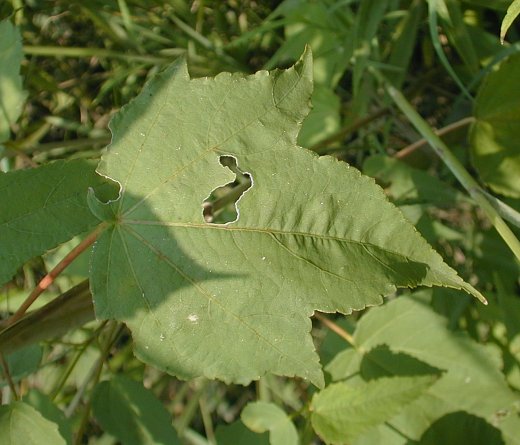
Cultivation:
The
preference is full or partial sun, fertile soil, and wet conditions.
Flowers require exposure to sunlight to open up properly. This wetland
species doesn't like to dry out.
Range & Habitat:
The native Halberd-Leaved Rose Mallow has been observed in most areas
of Illinois, except for extreme northern Illinois and some south
central areas of the state (see Distribution
Map). Habitats include marshes, swamps, low areas along
rivers and ponds, and soggy islands in the middle of rivers or ponds.
It is not often found in highly disturbed areas, and doesn't compete
well against the invasive Salix interior (Sandbar
Willow).
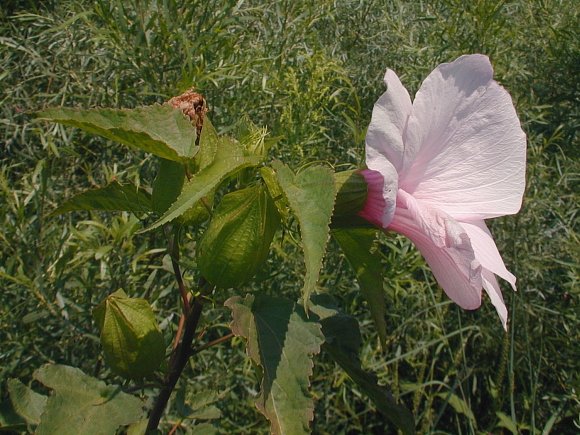
Faunal Associations: The nectar and pollen of the flowers attract bumblebees and an oligolectic bee, Ptilothrix bombiformis. Another common floral visitor, Melitoma taurea, is oligolectic on Ipomoea spp. (Morning Glory), but it is attracted to the large funnelform flowers of other plants. Some insects feed destructively on Hibiscus spp. (Rose Mallow). Caterpillars of the butterfly, Strymon melinus (Gray Hairstreak), feed on the flower buds and developing seeds, while caterpillars of the butterfly, Vanessa cardui (Painted Lady), feed on the foliage, as do caterpillars of Pyrgus communis (Checkered Skipper). Larvae of such moths as Eudryas unio (Pearly Wood Nymph), Anomis erosa (Yellow Scallop Moth), Automeris io (Io Moth), and Acontia delecta (Delightful Bird-Dropping Moth) also feed on these plants; the latter moth is found south of Illinois, however.
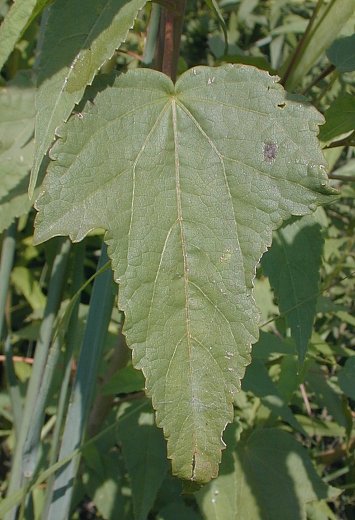
Other insect feeders
include the flea beetle Chaetocnema
quadricollis, larvae of the sawfly Atomacera decepta,
the
jewel beetle Paragrilus
tenuis, adults of Popillia
japonica (Japanese Beetle), and some aphid
species. Deer and livestock will eat the non-toxic foliage of
native Hibiscus spp. readily. However, the
introduced shrub, Hibiscus syriacus
(Rose-of-Sharon), which is often planted in yards, is apparently more
resistant to browsing by deer than the native Hibiscus spp.
Photographic Location:
Along a large drainage ditch at the Windsor Road Prairie in Champaign,
Illinois, where this species was introduced.
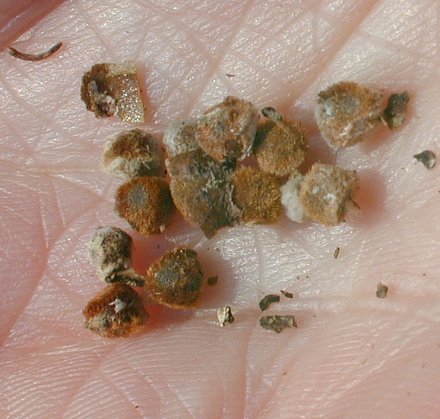
Comments: Halberd-Leaved Rose Mallow has large beautiful flowers that can be seen from a distance. Other native Hibiscus spp. in Illinois include Hibiscus moscheutos (Swamp Rose Mallow) and Hibiscus lasiocarpus (Hairy Rose Mallow). Halberd-Leaved Rose Mallow can be distinguished by its lobed leaves, as the latter two species have unlobed leaves that are oval-ovate in shape. While Halberd-Leaved Rose Mallow has hairless leaves and hairy seeds, Swamp Rose Mallow and Hairy Rose Mallow have hairy leaf undersides and hairless seeds! All of these species have similar flowers and they prefer similar wetland habitats, although Hairy Rose Mallow has a more southern distribution within the state. A scientific synonym of the Halberd-Leaved Rose Mallow is Hibiscus militaris.